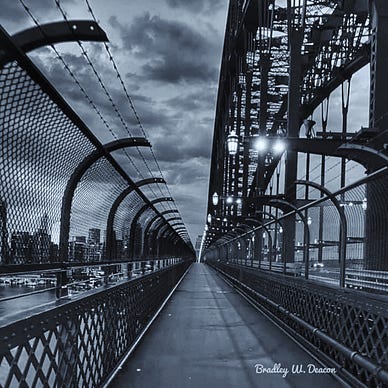The Art of Collaboration: Graphic Design Schools in the AI Renaissance
In a world where artificial intelligence can craft a sunset symphony on a sandy shore with a robot muse in less time than it takes to boil water for your ramen noodles, graphic design schools stand at a pivotal junction. The image of a robot contemplating the infinity of the ocean, generated by an AI in the blink of an eye, serves as a stark reminder and a beacon of what is to come. Here lies the future — not a grim prophecy of job-snatching robots, but a call to action for an educational renaissance.
The incorporation of AI into the graphic design curriculum isn’t just a futuristic gimmick; it’s a necessity to stay afloat in a sea of digital transformation. The question is no longer if AI will revolutionize the industry, but how swiftly educational institutions can adapt to this tidal wave of change.
The Challenge: Evolve or Dissolve
The impending AI revolution threatens to replace traditional graphic artist roles, casting a shadow of obsolescence on current educational models. As AI like ChatGPT flexes its creative muscles, churning out compelling visuals at warp speed, the value of a human graphic artist’s touch is being put to the test. The challenge for schools is to evolve curricula to emphasize the unique strengths of human creativity, insight, and strategic thinking — elements that AI is yet to master.
The Solution: AI as a Tool, Not a Replacement
To stay relevant, graphic design schools must teach students to view AI as a collaborator, not a competitor. Integrating AI into their creative process allows designers to harness the power of machine learning and computational creativity to enhance their work, not replace it. Prompting becomes a new-age art form; crafting the right prompts for AI to produce desired results is akin to a maestro composing a symphony, each note carefully placed to bring the piece to life.
Prompting: The New Brush Stroke
The art of prompting — instructing AI to generate specific outcomes — becomes a critical skill. It’s the new brush stroke, the modern palette knife, the contemporary chisel. Students must learn the intricacies of language, the subtleties of suggestion, and the precision of command to effectively collaborate with AI. The ability to feed the machine the right prompts is what will separate the wheat from the chaff in the job market.
Forward-Thinking Curriculum: A Must-Have
Colleges must embed AI tools into their curriculum to produce graduates who are proficient in AI collaboration. This includes understanding AI capabilities, ethical design considerations, and the limitations of machine-generated art. Projects should encourage experimentation with AI-generated content, and courses should focus on the development of personal style and brand — aspects that AI cannot replicate.
The Dawn of a New Era
As graphic design schools pivot to this new reality, they must become the crucibles where human creativity and AI’s capabilities meld. It’s not about fearing the AI eclipse; it’s about embracing the dawn of a new collaborative era. With the right mindset, educational institutions can produce graduates who are not just surviving but thriving in the AI renaissance of graphic design.
The robot on the beach, then, is not a harbinger of job loss, but a partner in creation. It invites us to explore new horizons, to push the boundaries of what’s possible, and to co-author the future of art and design. The message is simple: adapt and adopt, or become a relic of a bygone era. In the hands of a well-prepared graphic artist, AI is not the end of the road, but a vehicle speeding toward uncharted territories of creativity and innovation.
For more on AI Check out my List on Medium



